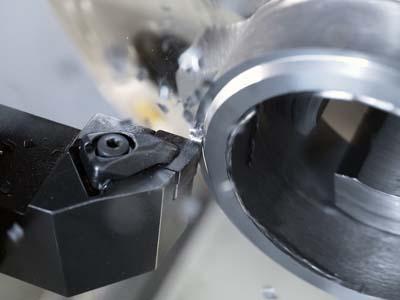
Seco Tools has launched a promotion to allow manufacturers who turn cast iron to experience the benefits of the newly launched TK Grades inserts. Under the program, manufacturers working with cast iron can request a free TK Grade sample insert.
With TK Grades, Seco has applied its unique Duratomic coating technology to enable a higher level of performance in cast iron turning. With the science of Duratomic, TK1001 and TK2001 allow for faster cutting speeds and more aggressive cutting data, while also achieving higher tool life.
First introduced in 2006, the Duratomic process involves manipulating aluminum and oxygen at an atomic level to create a harder, tougher and smoother insert surface. This directly translates into substantial gains in productivity, surface finish, tool life and overall cutting capability. In addition to increasing the physical durability of the insert, Duratomic technology provides superior thermal control to maximize process stability.
Intended primarily for use in gray cast iron, TK1001 can also be successfully applied to smooth cutting operations in ductile iron. In addition to incorporating Duratomic technology, TK1001 also incorporates new harder and more wear resistant substrates that allow it to be used in hardened steels in the 40 to 45 HRC range. TK1001 can handle light interruptions, but provides optimal performance in long, uninterrupted cuts, where it achieves high productivity, long tool life and the stability needed for confident unattended machining.
With a tougher substrate and extra edge toughness, TK2001 excels in cutting ductile iron. Its properties also make TK2001 a strong choice for gray cast iron applications that feature part instability or interrupted machining. The new TK grades are available via 211 new inserts in a wide variety of geometries and chip grooves, ensuring applicability across a broad range of operations.
Contact Details
Related Glossary Terms
- turning
turning
Workpiece is held in a chuck, mounted on a face plate or secured between centers and rotated while a cutting tool, normally a single-point tool, is fed into it along its periphery or across its end or face. Takes the form of straight turning (cutting along the periphery of the workpiece); taper turning (creating a taper); step turning (turning different-size diameters on the same work); chamfering (beveling an edge or shoulder); facing (cutting on an end); turning threads (usually external but can be internal); roughing (high-volume metal removal); and finishing (final light cuts). Performed on lathes, turning centers, chucking machines, automatic screw machines and similar machines.







